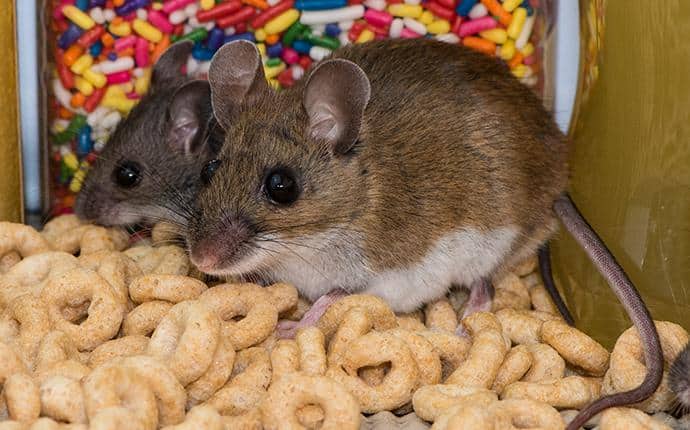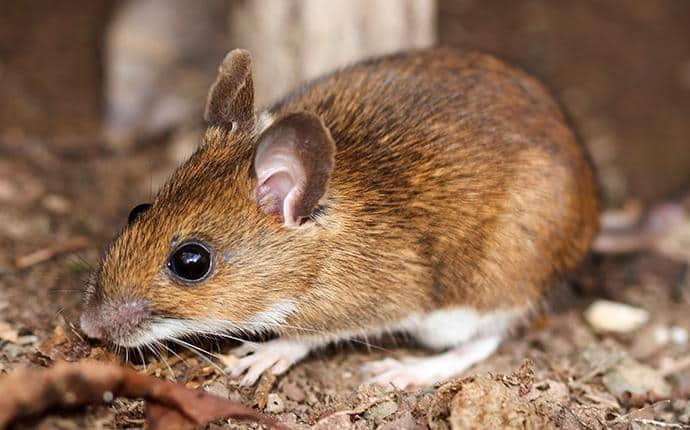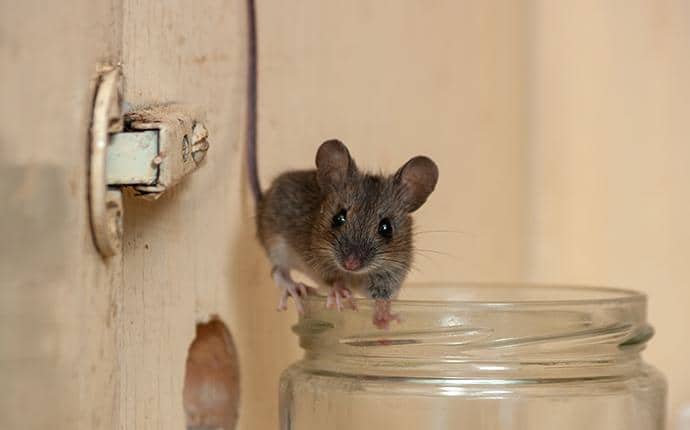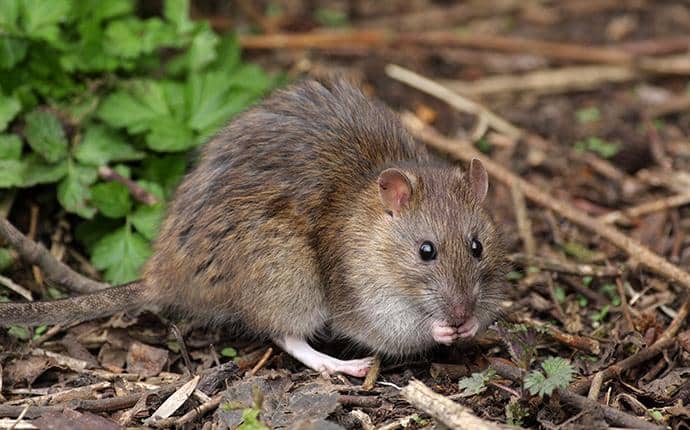Why do I have a problem with rodents?
Mice and rats are considered commensal rodents, that is they partially rely on humans for their survival. Easy access to food, water, and shelter are typically why property owners find their homes or buildings infested with rodents. Open garbage cans, compost piles, gardens, fruit trees, and bird feeders are likely to attract rodents. Rodents often hide out in construction debris, fallen trees, woodpiles, and outbuildings. They’ll also make their way inside structures if there are openings that make it possible. Holes along the roofline, gaps under doors, and other gaps or holes will allow rodents to enter.
Where do rodents nest?
Rodent nesting sites vary by species. For example, roof rats make their nests in trees, the upper levels of buildings including attics, and chimneys. White-footed mice typically live and nest outside and only venture inside to locate food. Their nests are often found in tree holes, under logs, in tree stumps, or underneath stones and/or rocks. Deer mice establish nests in hollowed-out trees, in woodpiles, and also in abandoned nests and burrows. Inside, they are often found nesting in wall voids, attics, and basements. Areas that are relatively undisturbed are ideal.
Are rodents dangerous?
Rodents can be dangerous. In order to keep their front incisors at a manageable length, these pests are constantly chewing. The result can be damage to electrical wires, drywall, other building materials, and even furniture and belongings. Rodents also contaminate insulation and other areas with their urine and feces.
Health risks are another concern associated with mice and rats. They are capable of spreading Hantavirus Pulmonary Syndrome, Leptospirosis, and Salmonella.
Rodents also introduce fleas, mites, and ticks. It is important to note the connection between rodents and ticks as there are tick-borne illnesses that residents of Washington should be aware of.
How do I get rid of rodents?
Just setting a few mouse traps is not the answer. Without identifying and correcting how they’re getting in, the rodent problem will continue. We recommend contacting a pest control company that specializes in rodent control. At Prosite, we offer relief from rodent problems. Our solution starts with the accurate identification of the rodent infestation. Once we know what the pest is, we’ll develop a plan of action that gets rid of these destructive and potentially dangerous critters. Visit our rodent control page for more information about our effective rodent control services in Central Washington.
How do I prevent problems with rodents?
To prevent rodents from infesting, you must eliminate the conditions that attract them. That means removing any potential food or water sources. Harvesting gardens and fruit trees, removing bird feeders, bringing pet food inside, and cleaning up pet feces will help discourage rodents. You should also make your structure impenetrable. We recommend sealing openings that rodents can squeeze through, installing chimney caps, and fixing holes on the roof and exterior.

Our Reputation Speaks for Itself!
Read Our Reviews
Serving Ellensburg, WA Since 2011
-
"Customer for Life!"We have used Prosite for many years now. We love our normal technician - he knows our house and he consistently does a great job.- Katrina A.
-
"Great As Usual!"We met our new technician, Michael, he is very knowledgeable and friendly.- Betty M.
-
"Professional and efficient service."The work was completed on time with no delays. The techs were professional, polite, and kept everything clean and orderly. Very satisfied with the job. A big thank you to Prosite Pest Control!- Robert B.
-
"100% Recommend!"Thomas was our technician and he was phenomenal and thorough.- Sara H.
-
"Efficient, professional, and friendly."The tech came for the quarterly service and inspection, greeted me pleasantly, and asked about any concerns. They did a great job around the house, were detail-specific, efficient, professional, and friendly. Communicated well about findings.- David P.
-
"Knowledgeable and friendly service."The team at Prosite Pest Control was knowledgeable about the solutions required to manage our problems. They were also very friendly with our dog.- Star L.




.2403171727550.jpg)
.2403171728550.jpg) Also referred to as pack rats, this species belongs to the rodent genus Neotoma. They are rat-like in appearance with the exception of their tails. Unlike other rats, which have scaly tails, wood rats have bushy ones. They grow up to 18 inches in length, have ears larger than typical rats, and their coloring varies by age and even seasons.
Also referred to as pack rats, this species belongs to the rodent genus Neotoma. They are rat-like in appearance with the exception of their tails. Unlike other rats, which have scaly tails, wood rats have bushy ones. They grow up to 18 inches in length, have ears larger than typical rats, and their coloring varies by age and even seasons. 




